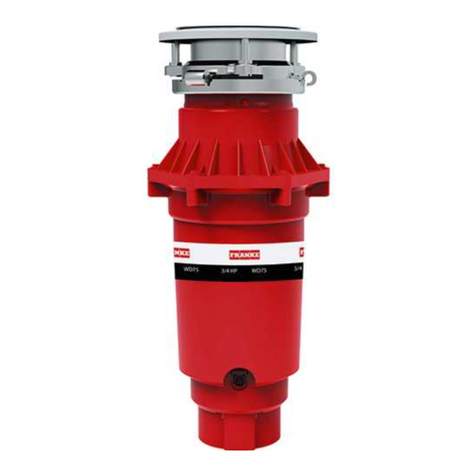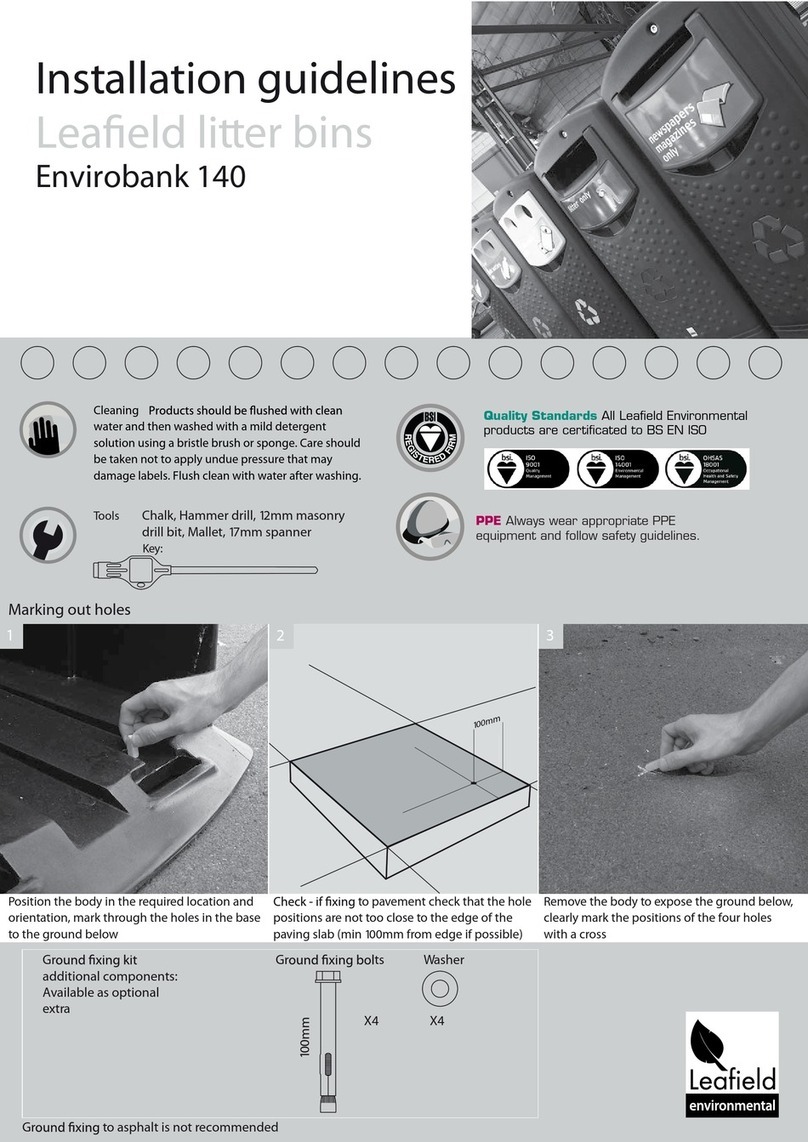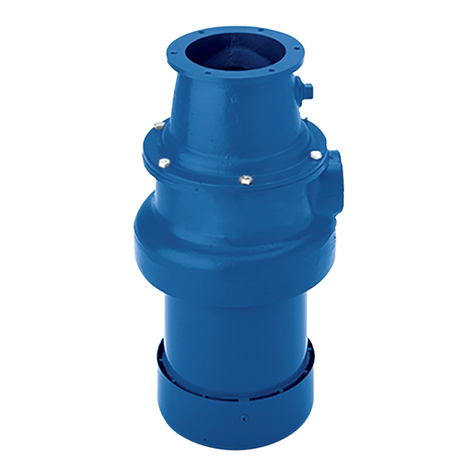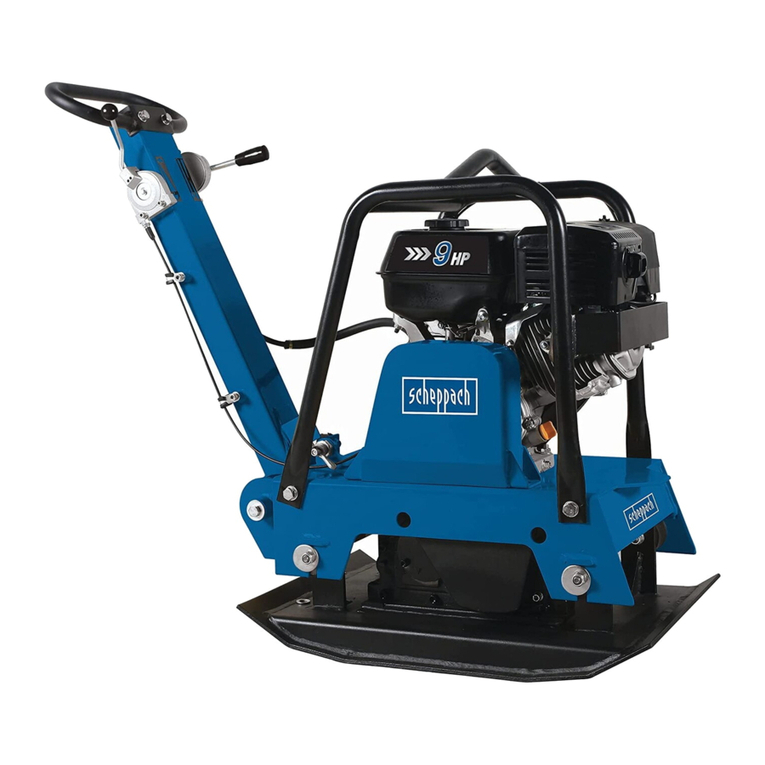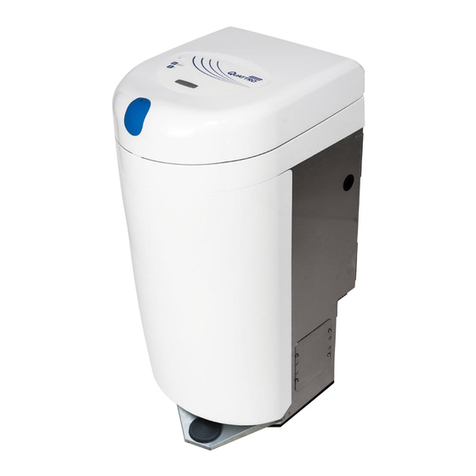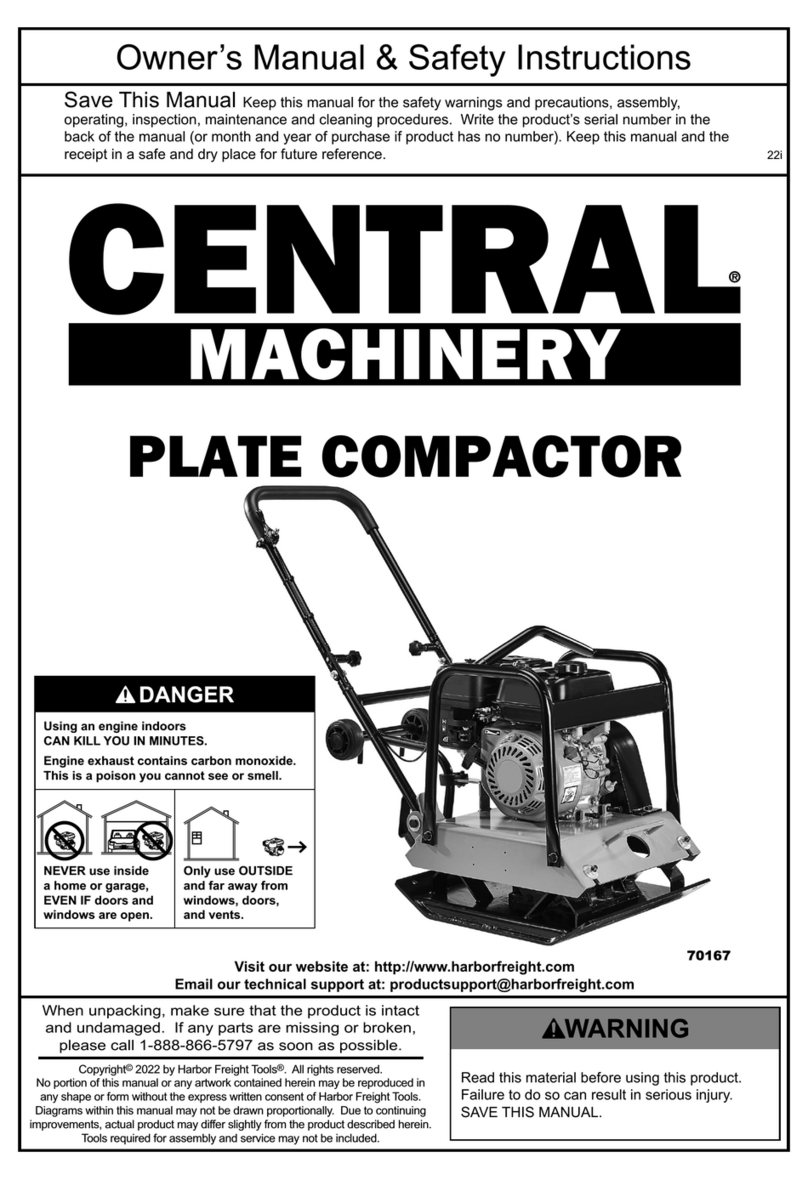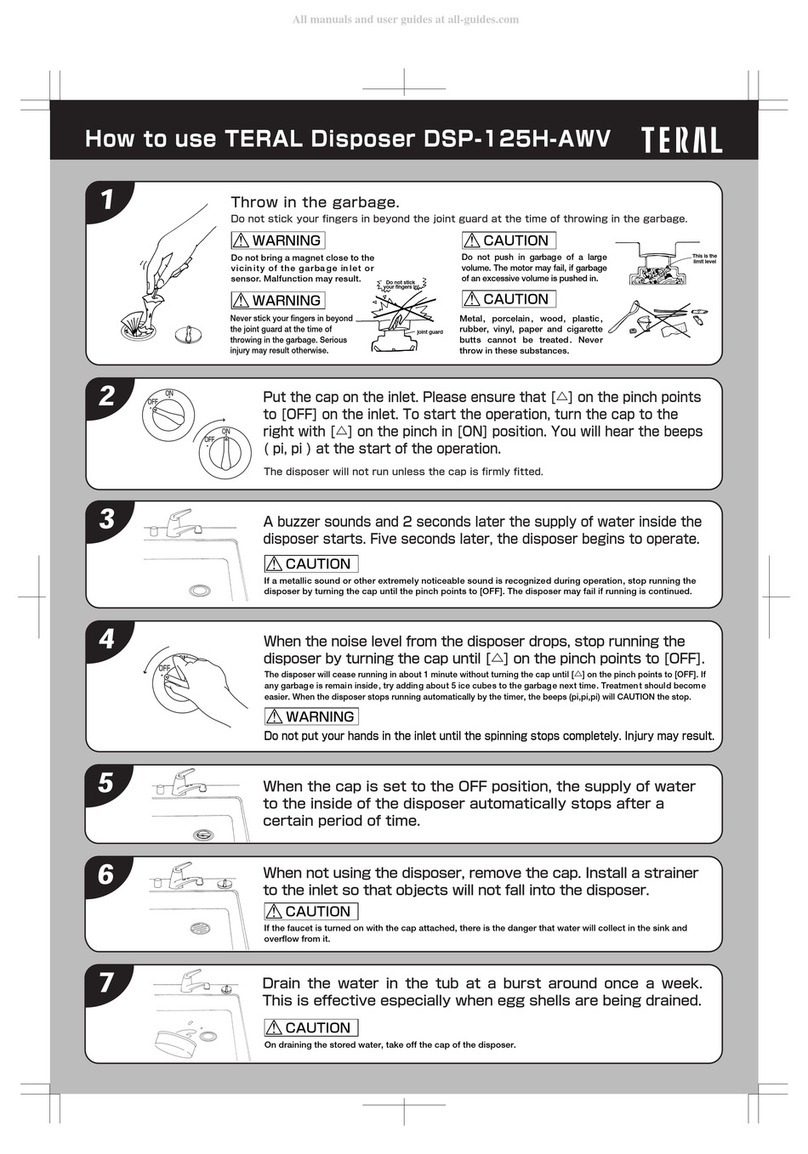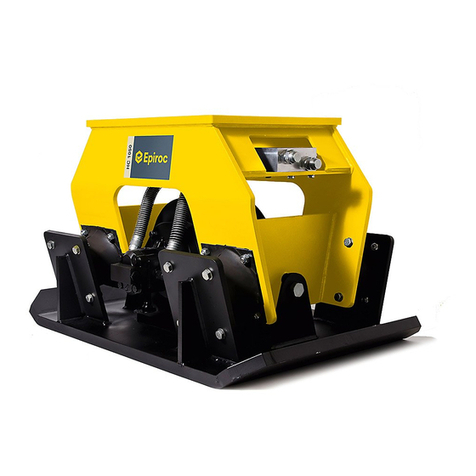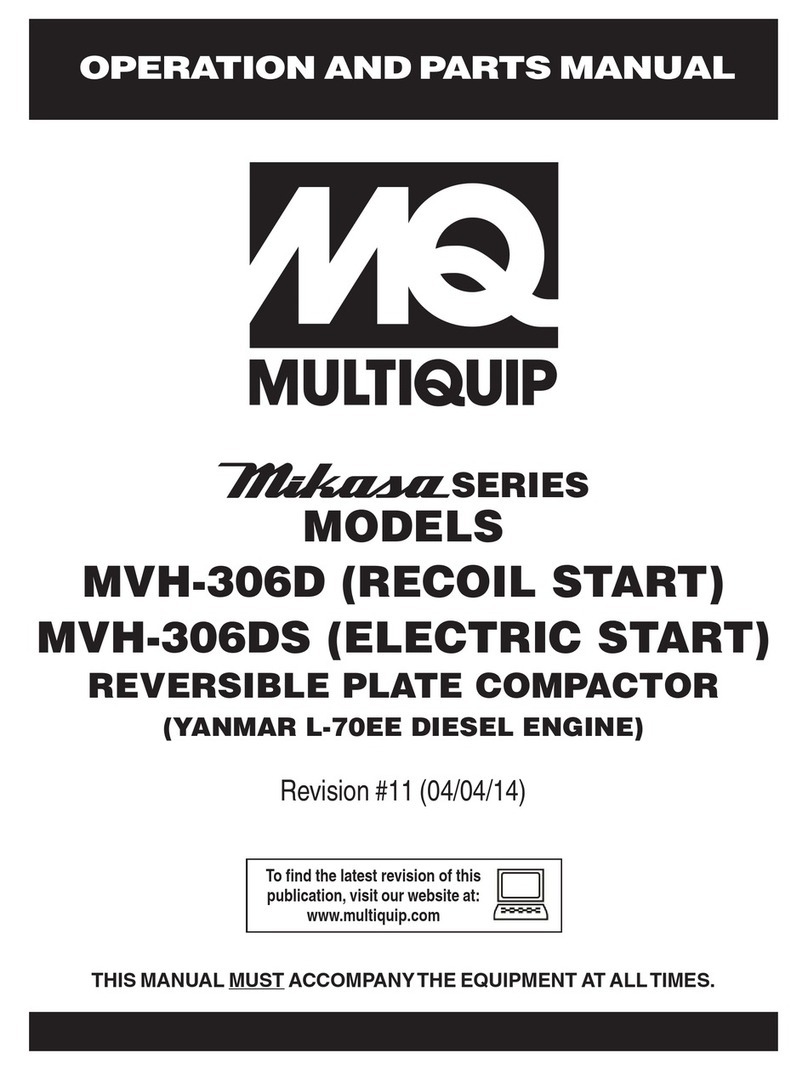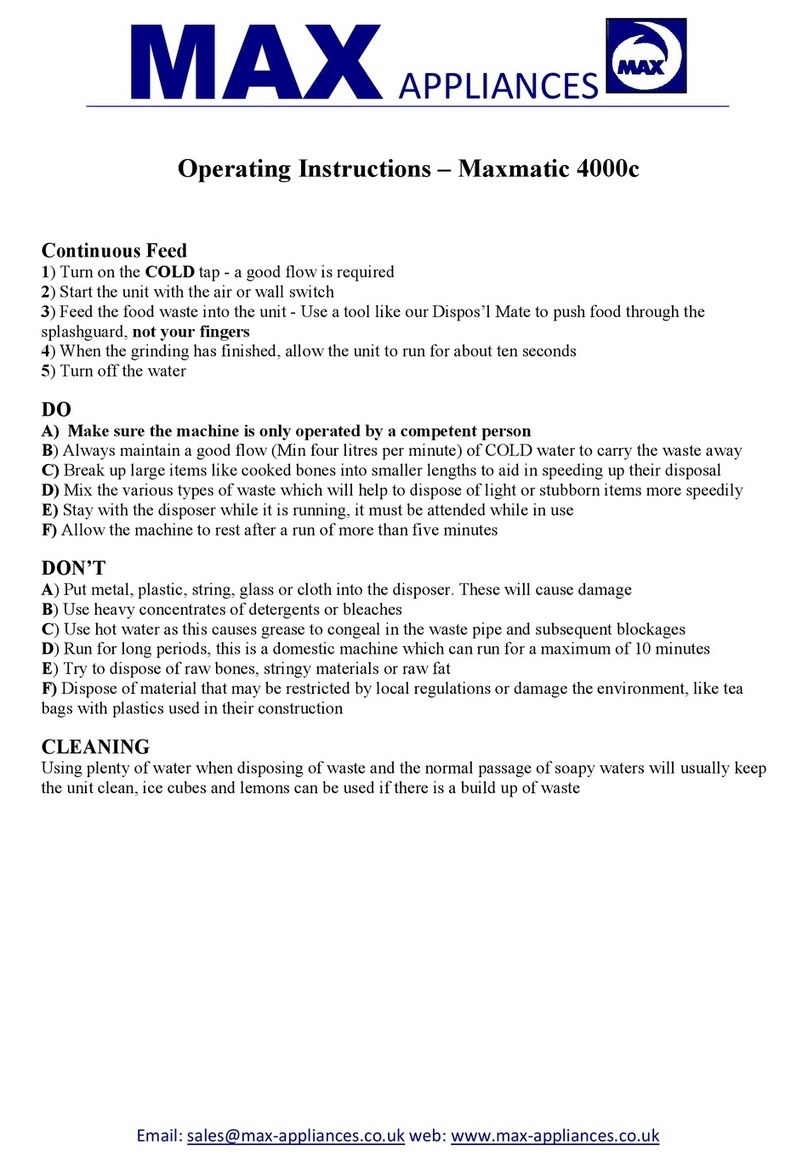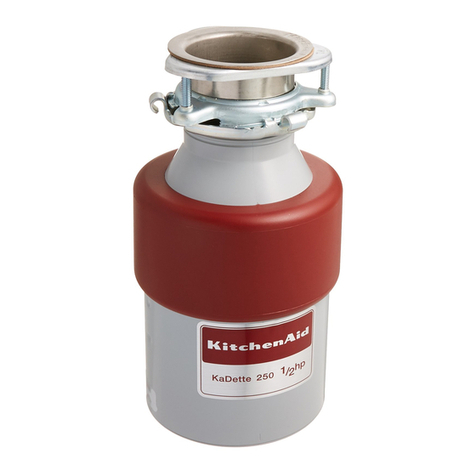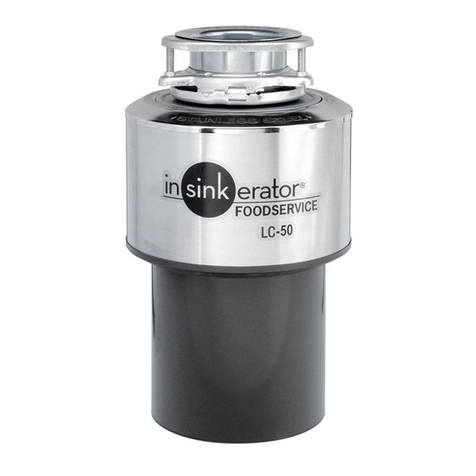
COPYRIGHT © 2011 -- 5 -- naturemill.com
TRANSFER COMPOST
Transfer compost down to the tray every 1-3 weeks, when compost looks like
soil. Wait until the mixing chamber is at least half full, but before it is completely
full or overloaded as it may jam. It will continue to compost in the tray.
When you push the TRANSFER button, the motor will mix the compost one
last time for a few minutes. Then it will reverse direction to open the flappers.
The compost will fall down to the tray below, where it will continue to compost
until you remove it. Finally, the motor will reverse again to close the flappers.
The entire process lasts about 20 minutes.
xTry not to add food to the mixing chamber for 8 hours before a transfer. New
food needs time to mix in. You can use the “Delayed Transfer” feature by
holding the transfer button for 5 seconds: the transfer light blinks, and a
transfer will happen automatically in 8 hours.
xA good time to transfer is after a
weekend away or just before
preparing a big meal.
xSome compost remains in the mixing
chamber to “activate” the next batch.
xSome compost may leak down to the
tray before you press TRANSFER.
This is normal, and not a problem.
REMOVE FINISHED COMPOST
Leave compost in the tray as long as possible to cure and dry. Check the tray
just before each transfer. Empty it if half full or more. Fresh compost attracts
earthworms and beneficial insects, so be sure to deposit it outdoors.
THE FIRST BATCH will be very wet and sour because the cultures are not
yet fully established. Discard the first batch.
xThe area under the tray may contain some stray compost. Clean this area.
Reinsert the tray quickly to prevent more compost from falling there.
xClose the door tightly. Resume normal use or initiate a transfer if ready.
xSee TROUBLESHOOTING section if compost is wet, dry, lumpy, or has
odors or mold. All of these can be improved with practice.
xYou can use the compost outdoors right
away, or store outdoors for later use.
See GARDENING WITH COMPOST.
xDo not cover fresh compost for prolonged
periods – it needs fresh air to breath.
xRain, snow, dry, wet, hot, or freezing
cold storage locations are ok.
English
naturemill.com -- 6 -- PATENT PENDING
ADJUST POWER SETTING
Press the button to adjust the power setting which varies the timing of mixing,
air flow, and temperature. Higher power works faster, but can dry out compost.
Lower power reduces noise, energy consumption, and wear.
xHIGH is best for initial start up, large quantities of food, tough or wet foods, or
if you experience odors, wetness, or lumpy compost. Try this mode first.
xMEDIUM is ideal for most home
composting. Use this if compost
dries out in High power .
xLOW is best for small quantities of
food, if you go on vacation, or if
your compost is dry or dusty in
Medium.
CLEARING A JAM
1. In the rare event that the jam light comes on, just wait 24 hours. The unit will
attempt to clear the jam automatically, and it is usually successful.
2. If the jam light stays on for more than 24 hours, remove the jammed material
from the mixing chamber. Usually it is a large, hard, or fibrous item, or a wad
of tough material. The unit may just be overloaded – remove some material.
Press the button to try mixing again and resume normal operation.
3. In the future, avoid whatever jammed or cut it smaller. DO NOT overload.
GARDENING WITH COMPOST
Fresh compost is ready for outdoor use, but not for indoor use. It is still “active”
and will attract earthworms and beneficial insects, and it may have a strong
earthy aroma. For indoor use, first cure and dry it outdoors for several days or
weeks. Just leave it in a pile, or in an open bucket to air out. Rain, snow, dry,
wet, hot, or freezing cold storage locations will not damage compost.
xFresh compost is very powerful. For gentle a time-release spread it around
plants on soil surface only, like mulch. Watering gradually draws nutrients into
the soil. Turning the soil seasonally also mixes in nutrients.
xOne tray is enough for 10-40 square feet (1-4 sq m) of grass or garden plants,
applied one to four times per year.
xConsult a local gardening expert or plant reference materials for specific
plants, soil, and growing conditions.
xUse a hand shovel to break apart clumps for appearance. Remove
uncomposted items and try to avoid them in the future.
English
